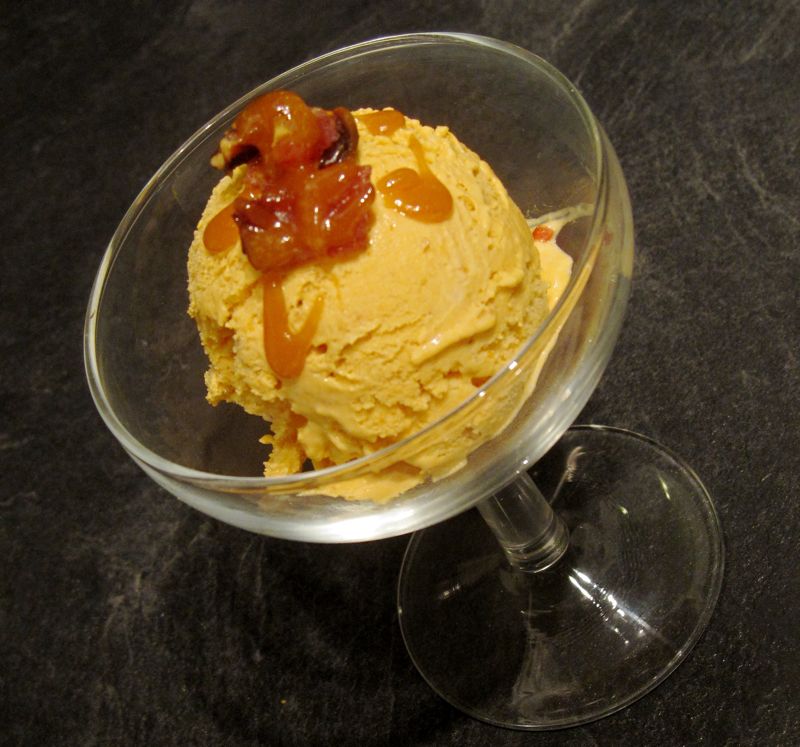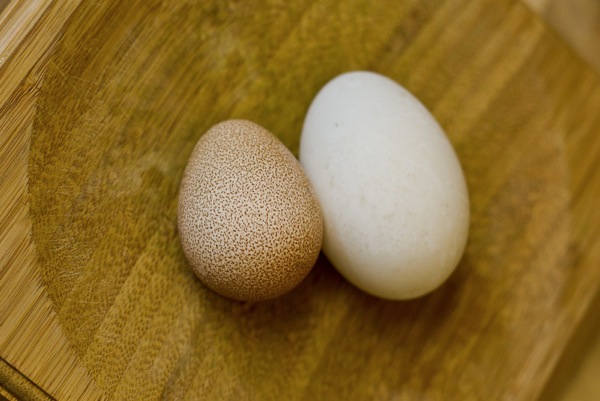
It’s said man cannot live on bread alone. Considering this statement, I’m surprised organised religion remained so popular for so long on our wee island, when you think what a cracking range of Irish breads there are (veda, potato bread, soda farls and wheaten bread amongst others). I’m all for a bit of decent bread, slathered with butter, rather than some dour sermonising or happy clapping. I’ll probably be smitten down by the hand of a deity for saying that, but at least I’ll go with a smile on my face and a full tum…
Sundays are ripe for laziness*, cooking, and loafing around the house. Today’s mission was to make a decent and homely wheaten bread, to help counter the autumnal blues outside. However we’d been out drinking in Leeds yesterday (sampling some great ales from Leeds and Ossett breweries amongst others), and after a late night and a fuzzy head this morning, something special was required for breakfast first.
I’d planned to make baked eggs, following the recipe from the Parlour Café Cookbook. These have rapidly established themselves as a brekkie standby, not least because they’re so easy to cook. Their simplicity belies their deliciousness. I swapped the Parma ham from their original recipe with some slivers of locally hand-crafted air-dried ham from my friends at Porcus. Their rare-breed pork is heavenly, and I’m privileged enough to get samples of their splendid ham from time to time. These were perfect to line the ramekins, before cracking a hen’s egg in each. But I felt I needed something a tad more substantial to accompany these, so I made some potato bread – a family favourite – for the first time ever.

As Miss South’s previously explained, it’s meant to be made with leftover mashed potato, but that’s rarer than hen’s teeth in my house, so I quickly cubed and boiled up a few spuds, ran them through the potato ricer, then mixed in some plain flour & a knob of butter to create a light dough with a bit of bite. Proportions may vary depending on how waxy/floury your spuds are, but normally you want 4 to 5 times more flour than mash. Miss South’s said it before and we’ll say it again: potato bread is dead easy… it takes a Herculean effort to mess it up. A perfect compliment to any kind of ham and eggs…

Wheaten bread, otherwise known as brown soda bread, is another one of those wonderfully yeast-free breads we love back home. As with soda farls, the secret is the baking soda which helps it rise. You can buy it in many supermarkets, ready-made and branded courtesy of Paul Rankin; and both it and the more well-known white soda breads are gaining popularity on this side of the water. No wonder, it’s both healthy and oh-so-tasty. The ever-reliable Dan Lepard popped up on Women’s Hour’s “Cook the Perfect…” last week with his own take on it, and this spurred me on to do it the North/South way…
We’re a bit more old school in our family, and the core ingredients for wheaten bread are normally just flour, buttermilk, baking soda, and a pinch of sugar. Wheaten bread’s at least as easy to make as potato bread, especially if you have some Northern Irish wheaten bread mix to hand (thanks to my mum for bringing some across this summer). Of course, you can instead use a good mix of plain and wholemeal flour instead… but try and use as coarse and bran-heavy a mix as possible, as this really contributes to the flavour. In a mix, the baking soda’s already in place, so today all I had to do was add buttermilk and sugar.

I’m lucky enough to be able to get buttermilk in my local Morrisons, but I hear it’s hard to source in many parts of the country, so you can use full-fat milk and sour it with some lemon juice, or mix in some live yoghurt instead. Use roughly 3 parts flour to 2 parts buttermilk… in this case I used 500g of flour and about 330ml buttermilk, with a teaspoon of caster sugar just to bring out that nuttiness of the bran even more.

Mix it all up until you get a nice dough, not too sticky or overworked. Then normally I’d roll it out into a roundish shape, about 1″ / 3cm thick, before scoring the top into quarters. I dusted it with a little plain flour, but it’s also good finished with some chopped rolled oats.

As I was mixing the dough I realised I’d not made this for far too long; in fact since I went to Rotterdam to visit friends from all over Europe and enjoy a good shared meal. My Italian mate knocked up some fantastic food, so I thought it’d be right to bring a decent Irish loaf to add to the mix. Most people smuggle addictive substances out of the Netherlands: I may be the only person to have smuggled a loaf of wheaten bread in!

This is a bread with instant gratification in mind, with no leavening or proving required. I baked this straight on the shelf in a pre-heated oven, rather than on a tray, for 35mins (200C/400F/Gasmark 6) straight. Once it came out, sounding hollow when tapped, it had to sit and cool down on a wire rack. This is one of my strongest kitchen memories as a kid. I used to hang around, greedily watching while my mum baked glorious bannocks of wheaten bread, but the hardest part was waiting for them to cool, far too slowly, on a wire rack, with a tea towel covering them. As I found out today, self-control still isn’t one of my strong points when it comes to wheaten bread, even after all these years. We succumbed while the bread was warm enough to melt great slatherings of butter.

Simple and effective with good butter, though I had a last-minute hankering for a bit of blue cheese, which works so well with the nutty sweetness of the bread. Cashel Blue would be the natural Irish choice, but I was able to pick up some very decent Jervaulx Blue instead, which I enjoyed along with a pot of Yorkshire Tea. Living just inside West Yorkshire, it seemed a perfect choice. It also makes superb toast. If you’re looking for something a little more special, slices of buttered wheaten bread alongside some good Irish smoked salmon, finished with a sprig of chervil, a squeeze of fresh lemon juice and some cracked black pepper is to die for.

*”Oh wheaten it be nice…” with apologies to the Small Faces…
























